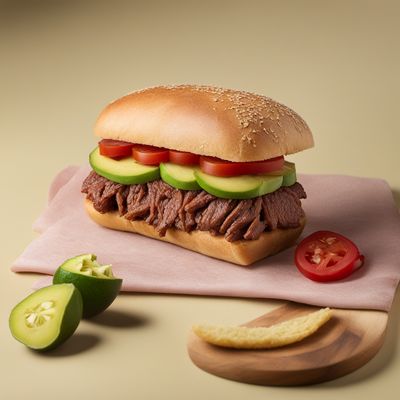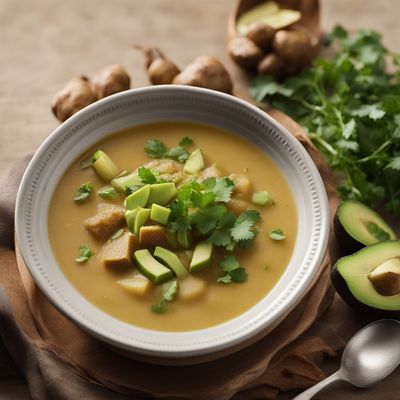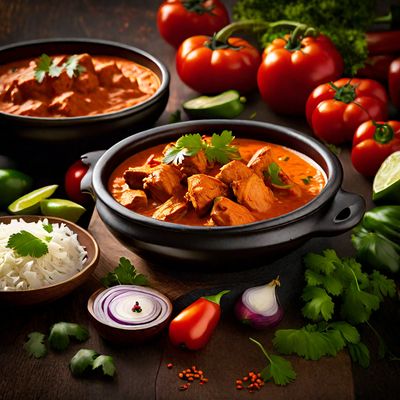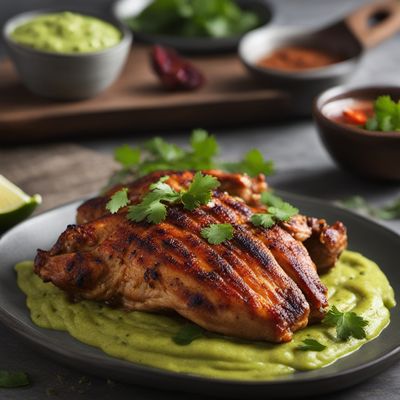
Ingredient
Capsicum baccatum
The Fiery Delight: Unveiling the Secrets of Capsicum Baccatum
Capsicum baccatum is a species of chili pepper that is native to South America. It is characterized by its vibrant colors, ranging from yellow to orange to red, and its distinctive wrinkled skin. The peppers are small to medium in size and have a thin flesh. They possess a moderate level of heat, typically milder than other chili peppers, making them suitable for those who prefer a more subtle spiciness. The texture of Capsicum baccatum peppers is crisp and crunchy, adding a delightful crunch to dishes. Their flavor is fruity and slightly sweet, with a tangy undertone that complements a wide range of dishes.
Origins and history
Capsicum baccatum has a rich history in South American cuisine, particularly in countries like Peru and Bolivia. It is believed to have been cultivated for thousands of years, with evidence of its use dating back to ancient Inca civilizations. The peppers were highly valued for their unique flavor and were used in various traditional dishes. Over time, Capsicum baccatum spread to other parts of the world, gaining popularity for its versatility and distinct taste.
Nutritional information
Capsicum baccatum is a nutritious ingredient, rich in vitamins A and C. It also contains antioxidants and dietary fiber. A 100-gram serving of Capsicum baccatum peppers provides approximately 40 calories.
Allergens
There are no known allergens associated with Capsicum baccatum.
How to select
When selecting Capsicum baccatum peppers, look for ones that have a vibrant color and firm texture. Avoid peppers that have soft spots or blemishes. The skin should be smooth and free from wrinkles or shriveling. Additionally, choose peppers that feel heavy for their size, as this indicates freshness.
Storage recommendations
To maintain the freshness of Capsicum baccatum peppers, store them in a cool, dry place. They can be kept at room temperature for a few days, but for longer storage, refrigeration is recommended. Place the peppers in a plastic bag or airtight container to prevent moisture loss and store them in the vegetable crisper drawer of the refrigerator. Properly stored, Capsicum baccatum peppers can last for up to two weeks.
How to produce
Capsicum baccatum can be grown by amateur gardeners in warm climates. It thrives in well-drained soil and requires full sun exposure. Start by planting seeds indoors and transplanting the seedlings outdoors once the weather is consistently warm. Regular watering and fertilization will help the plants grow and produce an abundance of peppers.
Preparation tips
Capsicum baccatum peppers can be used in various ways in the kitchen. They can be sliced and added to salads for a pop of color and flavor. They can also be stuffed with cheese or other fillings and baked for a delicious appetizer. Capsicum baccatum peppers can be roasted, grilled, or sautéed to enhance their flavor and soften their texture. They are commonly used in salsas, hot sauces, and marinades, adding a zesty kick to dishes. When handling Capsicum baccatum peppers, it is advisable to wear gloves or wash hands thoroughly afterward to avoid irritation from the capsaicin present in the peppers.
Culinary uses
Capsicum baccatum peppers are widely used in South American cuisine, particularly in dishes from Peru and Bolivia. They are commonly used in ceviche, a traditional seafood dish, to add a spicy and tangy element. Capsicum baccatum peppers are also used in salsas, stews, and soups, providing a vibrant flavor and mild heat. They can be pickled or dried to extend their shelf life and used as a seasoning in various dishes.
Availability
Capsicum baccatum peppers are commonly available in South America, particularly in Peru and Bolivia. They can also be found in specialty grocery stores or farmers markets in other regions, depending on the demand for South American ingredients.
More ingredients from this category
Recipes using Capsicum baccatum » Browse all

Asunción Style Ceviche de Criadillas
Tropical Delight: Asunción's Zesty Ceviche de Criadillas

Peruvian-style Spicy Chicken Stew
Aji de Pollo: Peruvian Spiced Chicken Stew

Peruvian-inspired Beef Sandwich
Andean Delight: A Flavorful Peruvian Beef Sandwich

Aji de Gallina with a Twist
Peruvian Comfort: Aji de Gallina with a Modern Twist

Peruvian-Inspired Gumbo
Andean Gumbo: A Fusion of Flavors

Peruvian Citrus-Marinated Sole Ceviche
Zesty Peruvian Sole Ceviche: A Burst of Citrus and Freshness

Chifa-style Spicy Braised Fish (Agujjim)
Peruvian-inspired Spicy Braised Fish with Chifa Flavors

Ecuadorian Potato Soup
Andean Comfort: Ecuadorian Potato Soup

Peruvian-Style Chicken Tikka Masala
Inca-Inspired Chicken Tikka Masala: A Fusion of Indian and Peruvian Flavors

Aji Criollo Peruvian Chicken with Spicy Green Sauce
Peruvian Delight: Aji Criollo Chicken with Zesty Green Sauce

Korčulanske Spomilje with a Twist: A Fusion of Croatian and Inca Flavors
Andean Delight: Inca-Inspired Korčulanske Spomilje

Colombian-inspired Tropical Fruit Sauce
Exotic Fruit Medley: A Colombian Twist on Cumberland Sauce
